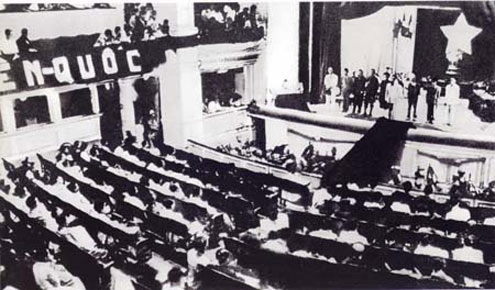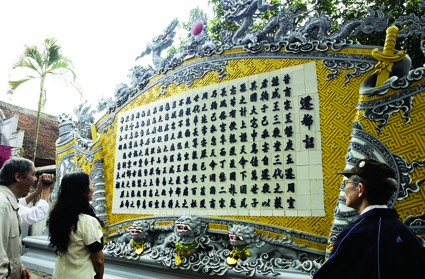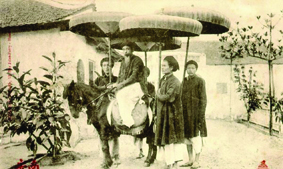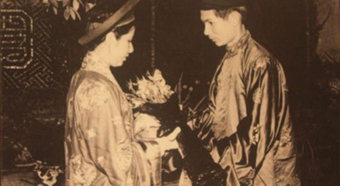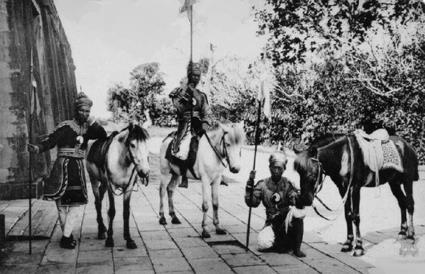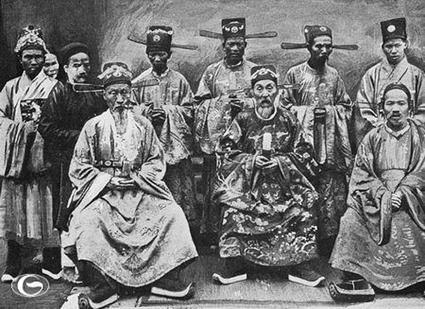This article analyzes basic features of the structure of traditional villages in southern Vietnam in the periods of the Nguyen dynasty and French colonization. It also points out the influence of that structure on the state model in southern Vietnam in history and suggests a link relating to the influence of that structure on the organization and operation of the present-day state administration.
Assoc. Prof. Dr. Nguyen Thi Viet Huong
Cao Tu Thanh, Sino-Nom (Chinese-transcribed Vietnamese) researcher
State and Law Institute of Vietnam
Villages constitute a parcel of the administrative structure in the history of the country in general and of its southern part in particular. As grassroots units, they play a crucial role in supplying human and material resources for the administration. At the same time, they are a traditional social institution contributing to the formation and development of the state institution.
By the criteria of traditional villages, southern villages before 1945 are an exception in many aspects. This has been dictated by the history of formation and development of Vietnamese communities in the region.
Moving into the southern delta at the end of the 17th century, Vietnamese of various generations brought along different experiences, including those in social organization. These experiences were conciliated in the course of land reclamation. In reality, individuals with physical strength, spirit of courage, sense of unity and organizational capability became reclamation leaders or semi-official representatives of villages. It was here that the process of restructuring the traditional village institution took place in parallel with the process of restructuring the political and economic powers: Only those who possessed not only vast land areas but also qualities of “anh Hai” (chieftains) were respected and became landlords. Many of them acted as local leaders in the anti-French armed struggle in Nam Ky (Cochin China) following the signing of the Treaty of 1862. The chivalrous and magnanimous qualities of these first-generation immigrants were reserved in the southern village institution till the period of French colonization, thus giving rise to non-official institutions as effective as unwritten law. It was not accidental that before 1945, many of Binh Xuyen (Chanh Hung Nha Be village) ringleaders did not see in their whole life the capitation cards issued by the colonial administration. This clandestine power system produced notorious Binh Xuyen gangs before the August 1945 Revolution and also a strong armed force called Binh Xuyen army, led by Duong Van Duong, in the anti-French movement. It should be stressed that the civilian-military regime lasting from the late 17th century to 1832, then the uprisings from 1833 to the late 19th century made the southerners of many generations lead a life that was half-civilian, half-military. These hard times fostered in these people high adaptability on the one hand and a big amplitude of degeneration on the other hand. In a circumstance of successive wards, when orthodox social norms waned, such people were prone to become accidental or potential criminals. Similarly, in an agricultural commodity economy based on massive land reclamation launched from the late 19th century, southern villages under the French rule, particularly southwestern villages, had an open structure with a new space of social interaction for poor farmers to enhance their living capacity. Moreover, being loosely tied to their place of origin as well as place of immigration, they were likely to become ill-doers. In many cases, their spirit of respect for moral principles prevailed their sense of law observance, which formed a system of non-official norms as a prominent consequence of a loose village structure.
The land reclamation history contributed to shaping a number of common features of the internal social structure of southern villages. From the time under the reign of the Nguyen Lords to the time of French colonization, the southern delta had been continuously reclaimed thanks to the agricultural development policies of various administrations. Unlike the northern delta, Cochin China appealed to immigrants without any discrimination. Private ownership was dominant among various forms of land ownership and economic activity developed toward pre-capitalist commodity production then capitalist commodity economy. In some areas and at certain times the land ownership in the South was characterized by a number of elements of fief.
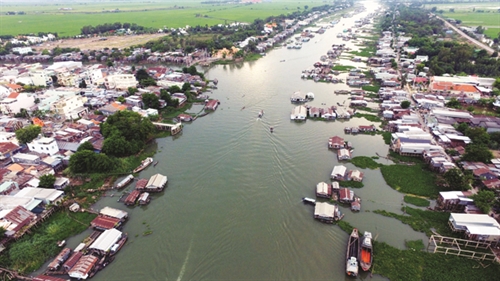 |
| A caged-fish rearing village on Chau Doc river (An Giang province) __Photo: Manh Linh/VNA |
Generally, before the French invasion of Vietnam, there existed in southern villages almost no big families with economic power, political position or cultural advantages that can control socio-economic activities in a certain area. Such cases as Mac Ha Tien family were rare and only among noble families of feudal mandarins. The southern region witnessed constant changes in population and early saw an agricultural economy with commodity production elements. As a result, there was no land for the family lineage regime to develop like in the central and northern regions during the 18th century.
The South under the Nguyen dynasty was prominently characterized by villages as the most common administrative units and a major grassroots administration level whilst in the North, communes constituted the grassroots administration level. The Nguyen Lords and the first kings of the Nguyen dynasty tended to give more prominence to villages as they advocated the formation of villages in all newly reclaimed areas in the South.[1]
Southern villages were explicitly characterized by an open culture, water culture and ethnic culture. Villages were formed primarily through land reclamation by various groups of people. Communities in the South had their own managerial models, which existed even before administrative units were established by the administration. The establishment of grassroots administrative units basically respected these communities. The table below on the southern grassroots administrative units of Gia Dinh in the early 19th century shows that villages account for more than 90%, while So and Pho of inhabitants of Chinese stock, Doi of Cha Va people and Soc of Khmer minority represented the rest (See Table 1).
Table 1: Names of grassroots administrative units in the early 19th century[2]
| No. | Grassroots administrative unit | Quantity | Percentage % |
Note |
| 1 | Thon (village) | 1,375 | 90.16 | |
| 2 | Phuong | 34 | 2.23 | |
| 3 | Xa | 29 | 1.90 | |
| 4 | Lan | 27 | 1.77 | In Binh Tri district |
| 5 | Suc (Soc of Khmer people) | 26 | 1.70 | In Ha Tien province |
| 6 | Ap | 13 | 0.85 | |
| 7 | Xom | 10 | 0.66 | |
| 8 | Pho (of Hoa people) | 4 | 0.26 | In Ha Tien province |
| 9 | Nau | 2 | 0.13 | In Long Xuyen, Ha Tien province |
| 10 10 |
Thuoc Trai |
2 1 |
0,13 0.07 |
In Ha Tien province In Vinh Thanh province |
| 11 | So (of Hoa people) | 1 | 0.07 | In Ha Tien province |
| 12 | Doi (of Cha Va people) | 1 | 0.07 | In Ha Tien province |
| Total | 1,525 | 100% |
The names of a number of villages also reflected to some extent the characteristics of the process of turning wasteland into rice fields and gardens in the early 19th century.[3] This can be seen in Table 2.
Table 2: Number of villages with names with special words in five southern provinces[4]
| Village name | Phien An province | Bien Hoa province | Dinh Tuong province | Vinh Thanh province | Ha Tien province |
| With “cuu” | 5 | 0 | 1 | 6 | 0 |
| With “tu chien” | 11 | 0 | 0 | 1 | 0 |
| With “tan” | 134 | 69 | 56 | 89 | 19 |
| With “thuy lap” | 26 | 7 | 50 | 54 | 0 |
Villages with their names containing the word “cuu” were all established very early while those named with the words “tu chieng” were inhabited by immigrants from various places. Villages with their names containing the word “tan” represented the largest number across the region. Many people hold that villagers added “tan”, a Chinese-Vietnamese word that means new, before the name of their old village to form the name of their new village as a way of recalling their native place[5]. Furthermore, all these names were in Chinese-Vietnamese words, which indicates that Vietnamese had settled down in the southern land and exercised their absolute sovereignty over the region. Of the total of 2,999 southern villages bordering on Cambodia, 2,867 were named in Chinese-transcribed Vietnamese, accounting for 95%, and only 132 have their names possibly in Nom or Khmer, and Malay[6].
“This can be explained that almost all places there were named in Chinese-Vietnamese due to the demand for official names of villages, which was also the demand for the establishment of a state administrative system in that region. In other words, only when Vietnamese inhabitants became owners of this area was an administrative system really required; hence, there is no other alternative than the names of all residential places bore the trace of the Vietnamese, of a state established by the Vietnamese.”[7]
By the mid-19th century, there appeared in the Cochin China land register the names of 1,637 villages, of which 1,214 villages had their names starting with one of 13 words[8], including Tan (new) for 280 villages, Binh (peace) for 196 villages, An (safe) for 124 villages, Long (solemn), Phu (prosperous) for 100 villages, Thanh for 19 villages, Thoi for 17 villages, etc. This way of naming administrative units demonstrated the initial experience of southerners during the reclamation process as well as their wishes for a better life, such as Tan Quang village, An Tai village, An Thanh village, Binh Hoa Trung village, Phuoc My village, etc.
In the South, villages are located far from one another. “Southern villages are not surrounded by bamboo belts. They are often located along river or canal banks with a row of houses and gardens, then fields behind houses. Only at river inter-sections, houses are many, forming small marketplaces.”[9] The administrative management in the South is difficult due to migration and scattered inhabitation. For instance, in Ha Tien, “The Vietnamese and Tho inhabitants reside mixedly while Hoa, Khmer and Do Ba (Cha Va) lived along the coast, where wasteland was not yet reclaimed. Hence they often moved here and there.”[10]
As a result, in addition to the official administrative system, there also existed in southern villages a self-management system represented by “dich muc” (assistants), who had to press their fingerprints in the land register next to the signatures and seals of village chiefs. Managerially, the prominent feature of southern villages was their non-binding by complicated village codes as well as non-discrimination between long-time residents and newcomers, between natives and aliens. After the Nguyen dynasty established the administrative system, villages became the grassroots administrative units of the feudal regime. Yet, the village institution in the South was more loose than that in the northern delta and northern central regions.[11]
The loose structure of southern villages requires closer alignment with the higher state administration, permitting the latter’s deeper intervention into villages’ internal affairs. Southern villages rarely had a chance to perform their community administration with their own capacity and instruments or to separate themselves completely from the superior administration like the majority of northern villages. However, this did not mean that the state was able to strictly manage the villages. Since southern villages were organized at different times as a result of land reclamation activities by different groups of people and located sparsely over large areas, the state administration of the villages was actually loose too. So, while northern villages were so closely structured that they were rather isolated from the higher state administration which had to give them the autonomous status, the loose structure of southern villages allowed them to easily integrate into the state administrative system. In the South’s history, the State opted to relax governance over villages.
Under the Nguyen dynasty, particularly after the administrative reforms by King Minh Mang in 1832, southern villages advanced one step further on the path of institutionalization.
Built in each southern village was a communal house which, during the reign of the Nguyen dynasty, functioned as the village’s administrative office, traditional house and community club on the occasion of village festivals and rites. In the village traditional house, deities (mostly land deity or water deity, rarely human deity) were worshipped together with the village land reclaimer and the village founder.
In short, southern villages are characterized by a simple, loose and open structure with traditional elements. Under the French rule, this structure developed in a complicated manner due to the differences between rural and urban areas, between regions reclaimed under the Nguyen dynasty and those reclaimed under the French rule, between villages of Vietnamese people and those of ethnic minorities. However, their policies on administrative control through a quisling administration in order to politically control most rural villages created a crack in the colonial institution in the South and also the disparity in legal norms between villages and superior administrative units as well as loopholes in the management of villages because too much power was delegated to the quisling administration. Many patriotic movements from the early 20th century to the August 1945 Revolution deepened such crack in the structure of the colonial state institution in this period.-
